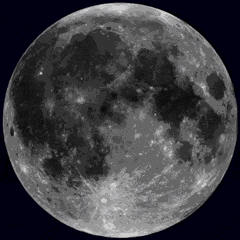<p >Commander of Ukraine’s Defence Intelligence Directorate Lieutenant General Kyrylo Budanov has singled out the performance of North Korean 170mm self-propelled howitzers, during a recent interview focusing on foreign countries’ support for the ongoing Russian war effort, lamenting the serious complications which these guns’ advanced capabilities have caused for Ukrainian forces. North Korea is the only country in the world to field artillery of this calibre, with the system having entered service in the mid-late 1970s, and being modernised considerably over close to half a century. With the gun’s Korean name remaining unknown, it has been referred to in the West as the Koksan, after the region it was first observed in by U.S. intelligence in 1978. Variants have otherwise been referred to in NATO member states as the M1978 and M1989, based on the years in which they were first seen. The howitzer is surpassed in size only by the Soviet 2S7M Malka, although this system has a relatively short range and was only ever fielded in a small number of units, in contrast to the Koksan which is very widely deployed by the Korean People’s Army and by many estimates has the longest engagement range in the world.&nbsp;</p><p ><img src="https://militarywatchmagazine.com/m/articles/2025/06/11/article_68492f50f32fa2_01062252.jpeg" title="Korean People`s Army Leadership Inspect 170mm Artillery Units"></p><p >Regarding the capabilities of the 170mm howitzer, the Ukrainian intelligence chief observed: “Unfortunately, this gun is demonstrating itself quite well in battle. It’s firing from quite a long range, and it’s quite good in terms of accuracy.” “We have data that the Russian Federation was provided 120 pieces. But I think that supply will continue because these guns are demonstrating themselves quite well. This is unfortunate for us because this is artillery for long-range firing,” he elaborated. 120 guns would in North Korean service equip approximately four army artillery regiments. It remains uncertain whether the 170mm guns are in service in the Russian Army, or whether they are operated by Korean People’s Army units stationed in Russia, with the possibility remaining that the system is being used by both services. In a&nbsp;<a href="https://militarywatchmagazine.com/article/nkorean-artillery-saved-russia-6million">previous assessment&nbsp;</a>on October 31,&nbsp;2024, Military Watch&nbsp;highlighted the possibility that the 170mm guns could join the ongoing Russian war effort, just two weeks before the first images <a href="https://militarywatchmagazine.com/article/nkorean-koksan-170mm-ukraine">confirmed their arrival&nbsp;</a>in Russia. Subsequent batches were <a href="https://militarywatchmagazine.com/article/nkorea-delivers-new-170mm-artillery-russia">filmed arriving</a> in mid-December. Financing from exports of 170mm guns to Russia could allow for an acceleration of production in North Korea, potentially of new variants modified to meet Russian Army requirements. Use of the guns in the theatre may also lead Russia to commission the opening of a production line for 170mm ammunition domestically with North Korean support.&nbsp;</p><p ><img src="https://militarywatchmagazine.com/m/articles/2025/06/11/article_68492f0f21f137_58904164.png" title="North Korean 170mm Guns Being Transported in Russia"></p><p >North Korea’s deployment of by far the world’s largest artillery force has led both Russian and overseas analysts to assess artillery to be an area where support from the country would be&nbsp;<a href="https://thediplomat.com/2022/08/will-we-see-north-korean-forces-in-eastern-ukraine/" >particularly valued</a>&nbsp;in the Ukrainian theatre. The Russian Army was by the end of 2024 already estimated to have&nbsp;received up to 9 million rounds&nbsp;of 122mm and 152mm artillery from the country, with the transfer of 170mm guns allowing for a third calibre to be sold. Newer images have confirmed the adoption of 60mm and 140mm mortars for use in frontline Russian Army units. Due to the sharp contraction both of Russia’s defence sector and of its ground forces in the aftermath of the Soviet Union’s disintegration, the country not only fields mortar and artillery systems in just a fraction of the numbers that North Korea does, but is also estimated to have much lower productive capacities.&nbsp;As a result, the Russian Army’s reliance on North Korean supplies has continued to grow, with many Russian artillery units having come to rely almost entirely on ammunition supplied by North Korea. At least six Russian artillery units currently source between 50 and 100 percent of their munitions from the country.&nbsp;The ongoing conflict is widely thought to be <a href="https://www.nknews.org/2025/04/north-korea-has-earned-estimated-20b-from-military-support-for-russia-report/" >fuelling</a> a major economic boom in the heavily militarised East Asian state, footage from which has shown signs of further acceleration of its previously already significant economic growth.&nbsp;</p>
